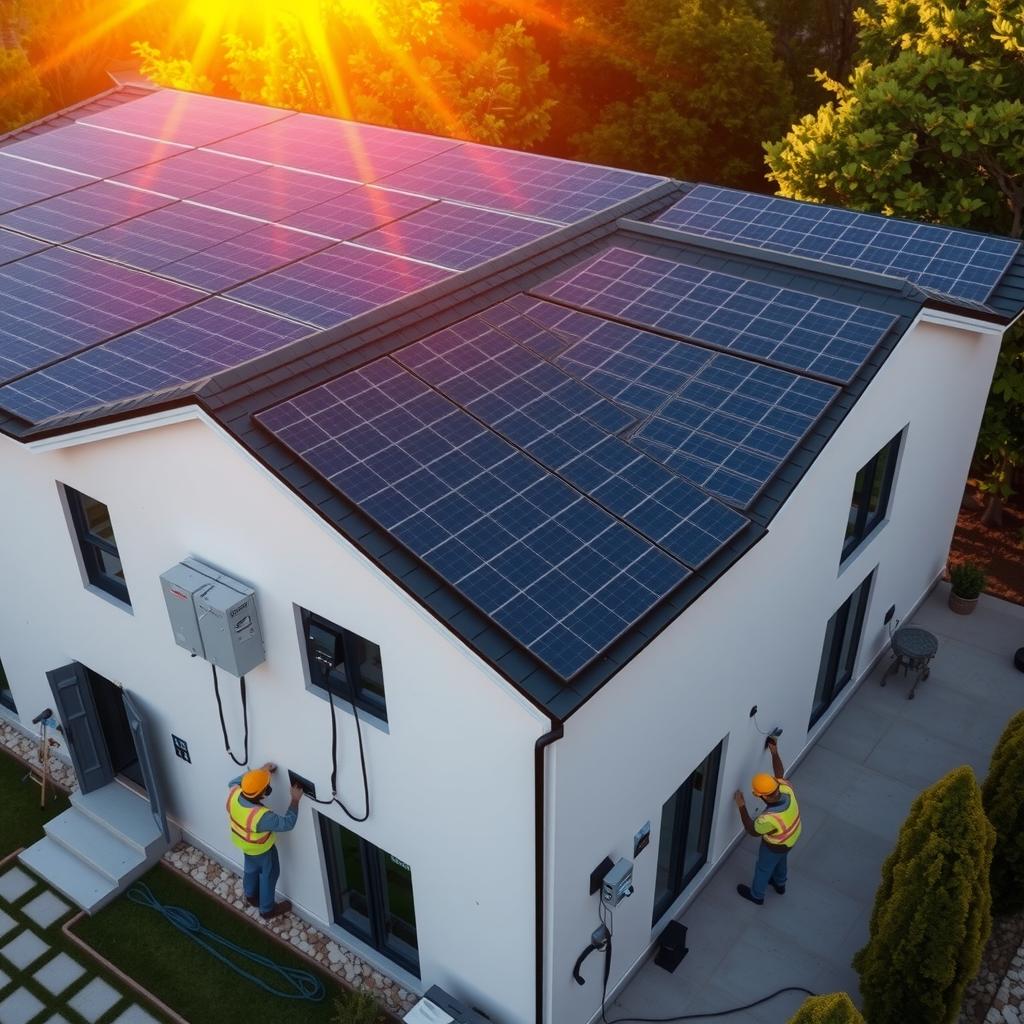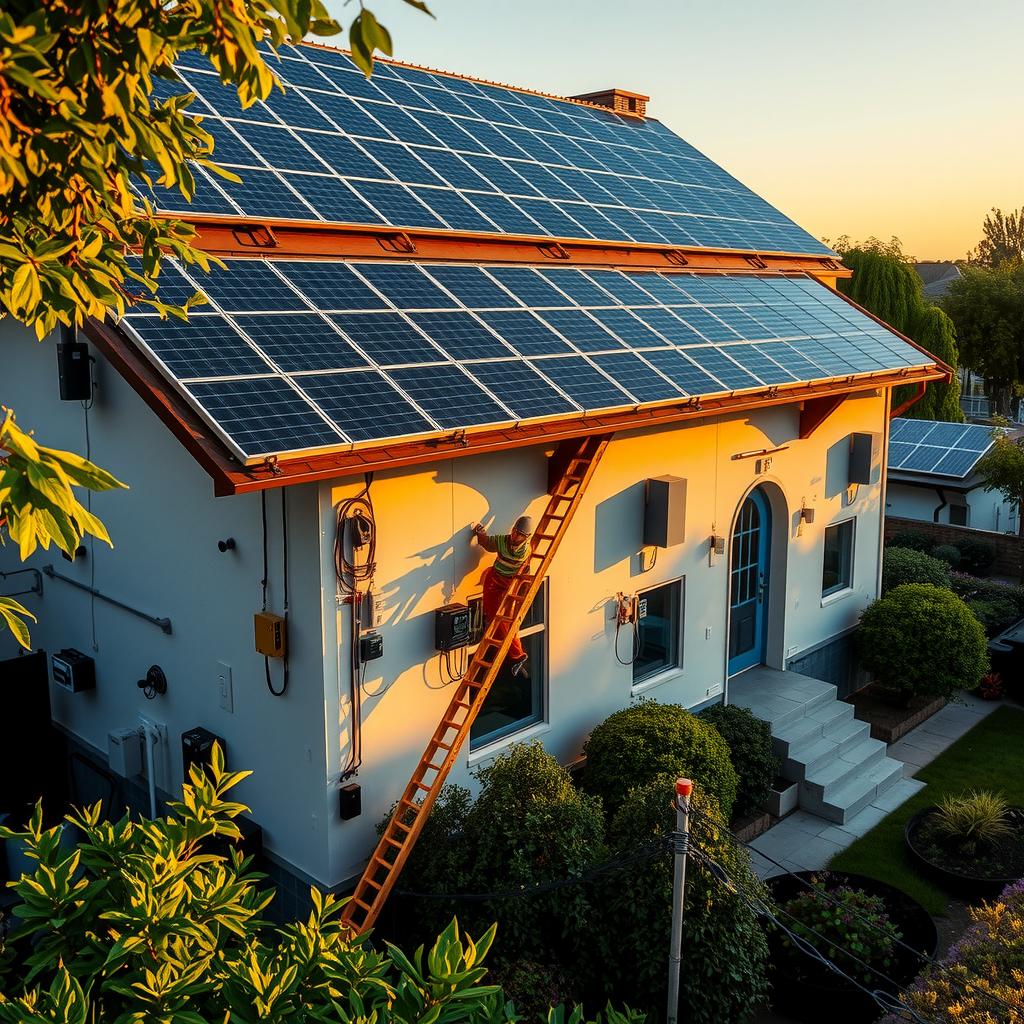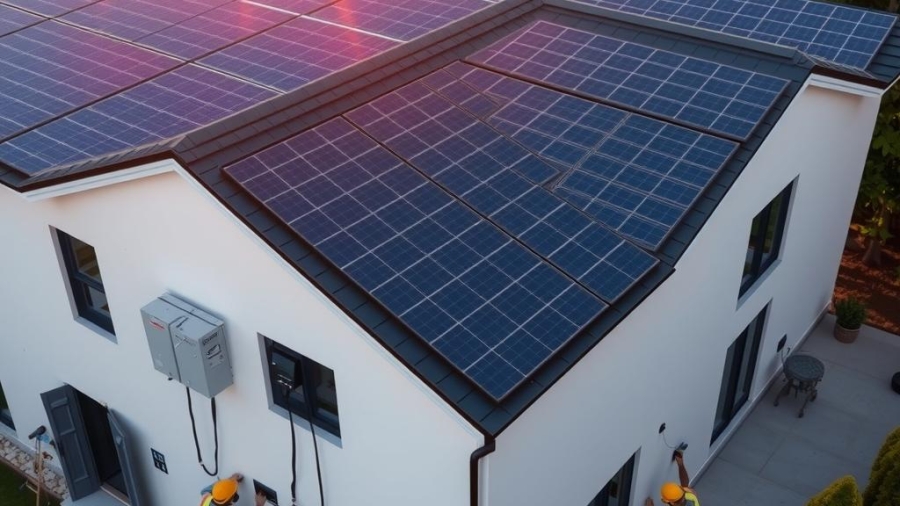As homeowners increasingly seek sustainable energy solutions, the question of how to maximize their investment in solar technology becomes paramount. Specifically, when considering solar inverters, one key factor stands out: efficiency. With numerous options available on the market today, understanding how to conduct an efficiency comparison can significantly influence both short-term and long-term benefits for residential solar systems. The right inverter not only impacts the overall performance of a home’s solar installation but also plays a crucial role in optimizing energy savings.
To illustrate this point, consider that even minor differences in inverter efficiency can lead to substantial variations in energy output over time. Homeowners may find themselves wondering whether they are truly getting the most bang for their buck with their chosen system or if there might be a more cost-effective alternative available. This blog post aims to unpack those complexities by providing insights into the performance evaluation of different types of solar inverters specifically tailored for home installations.
By examining factors such as conversion rates and operational durability, readers will gain valuable knowledge about what makes an inverter efficient and how these efficiencies translate into tangible savings on utility bills. Furthermore, exploring various models allows homeowners to make informed decisions that align with their renewable energy goals while ensuring optimal functionality within their specific living environments.
In essence, this article serves as a comprehensive guide for anyone looking to navigate the intricate landscape of solar inverter efficiency. By focusing on critical aspects like performance metrics and practical applications within residential settings, it ultimately provides readers with actionable insights that pave the way toward smarter investments and enhanced sustainability practices at home. As we delve deeper into this analysis together, it is essential to keep these considerations at the forefront—after all, every percentage point matters when striving towards greater eco-friendliness and financial prudence through effective solar technology integration.

Key Insights:
-
Understanding Solar Inverter Types: A brief overview of the different types of solar inverters available for home installations highlights their distinct functionalities. Homeowners can benefit from knowing whether to choose string, micro, or power optimizers based on their unique energy needs and roof configurations.
-
Evaluating Efficiency Metrics: The importance of conducting an efficiency comparison among various models cannot be overstated. By analyzing metrics such as conversion efficiency and reliability, homeowners are better equipped to select a solar inverter that maximizes energy savings while ensuring long-term performance within their residential solar systems.
-
Cost-Effectiveness Considerations: Beyond initial purchase price, understanding the total cost-effectiveness of a solar inverter is crucial. Factors like warranty periods, maintenance costs, and potential increases in electricity rates should be considered when evaluating how well a given model supports sustainable living through renewable energy solutions.

Understanding Solar Inverters: Key Metrics
A Comprehensive Guide to Choosing the Right Inverter
The selection of a solar inverter is crucial for optimizing the performance of residential solar systems, impacting both energy savings and overall efficiency. One of the primary metrics to consider when evaluating solar inverters is their conversion efficiency. This metric indicates how effectively an inverter converts direct current (DC) from solar panels into alternating current (AC), which can be used by household appliances. High-efficiency models can achieve over 95% conversion rates, ensuring that homeowners maximize energy harvested from their solar technology investments. Conversely, lower-efficiency inverters may lead to substantial energy losses, affecting long-term cost-effectiveness and return on investment.
Reliability stands as another critical factor influencing inverter selection. The operational lifespan and warranty offered by manufacturers provide insights into an inverter’s durability under various conditions. Many high-quality inverters feature robust designs capable of withstanding extreme weather events or fluctuations in temperature, making them suitable for diverse climates where home installations occur. Furthermore, performance evaluation during real-world usage showcases how these devices perform over time; thus investing in reputable brands often correlates with fewer maintenance issues and increased reliability.
Unique features also play a significant role in differentiating one solar inverter model from another. For instance, certain advanced units include smart monitoring capabilities that allow users to track their system’s performance through mobile applications or web platforms—providing valuable data about energy production versus consumption patterns. Additionally, some models are equipped with safety features such as rapid shutdown functionality or arc detection mechanisms designed to protect both property and personnel during emergencies—a vital consideration for any homeowner looking into renewable energy solutions.
When conducting an efficiency comparison, it’s essential not only to focus on theoretical ratings but also on practical outcomes experienced by existing users within similar geographical areas and setups; this hands-on perspective provides deeper insights into actual system performances across various conditions encountered throughout different seasons. Moreover, understanding installation compatibility can help ensure that chosen products align seamlessly with other components within the residential setup while adhering to local regulations governing renewable technologies.
In conclusion, selecting an appropriate solar inverter requires careful consideration of several key metrics including conversion efficiency rates alongside aspects like reliability and unique featured functionalities tailored towards individual user needs—all contributing significantly toward achieving desired outcomes related directly back to effective energy management practices aimed at enhancing sustainability goals within modern households today.
Comparative Analysis of Top Models: Performance vs. Cost
Evaluating Leading Solar Inverters for Optimal Energy Savings and Affordability
In the realm of solar technology, selecting the right solar inverter can significantly impact both energy savings and overall system performance. As homeowners increasingly turn to renewable energy sources, it becomes vital to conduct a thorough efficiency comparison among the leading models available on the market today. Each model offers distinct features that cater to various needs, but understanding how these attributes translate into real-world benefits is essential for making an informed decision.
The primary function of a solar inverter is to convert direct current (DC) produced by solar panels into alternating current (AC), which powers home appliances. However, not all inverters are created equal; variations in design and technology can lead to substantial differences in efficiency ratings. A high-performing inverter maximizes energy output, ensuring that homeowners receive optimal returns on their investment while minimizing losses during conversion processes. Furthermore, advancements in solar technology, such as string inverters, microinverters, and power optimizers present unique advantages depending on installation scenarios—particularly when considering shaded areas or varying roof orientations common in residential installations.
When evaluating cost-effectiveness alongside performance evaluation metrics like efficiency ratings and warranties offered by manufacturers, it’s crucial to consider both short-term expenses and long-term benefits associated with each option. For instance, while some models may have lower upfront costs due to fewer integrated features or less robust construction materials, they might result in higher operational costs over time due to decreased efficiency or increased maintenance requirements. Conversely, investing slightly more initially into a premium model could yield significant savings through greater durability and enhanced energy savings over its lifespan.
Additionally, potential buyers should take note of how local incentives toward renewable systems affect overall financial considerations when choosing a solar inverter for home installation purposes. Government rebates often encourage adopting clean energy solutions by reducing initial capital outlay for equipment purchase — further emphasizing the importance of comparing different manufacturers’ offerings comprehensively before committing financially.
Ultimately, conducting this comparative analysis empowers consumers with knowledge about what makes one solar inverter stand out from another regarding performance versus cost dynamics within residential solar systems. By focusing on aspects such as reliability under varied conditions alongside transparent pricing structures across different tiers of products available today ensures that prospective users align their expectations appropriately with achievable outcomes tailored specifically toward enhancing sustainability efforts at home without compromising affordability factors inherent therein.
Innovations in Solar Inverters: The Next Generation of Efficiency and Sustainability
Advancements Shaping the Future of Residential Energy
The landscape of solar technology is evolving rapidly, with innovations in solar inverters leading the charge toward enhanced efficiency and sustainability for homeowners. As residential solar systems gain traction, modern inverter designs are emerging that promise not only to optimize energy conversion but also to integrate seamlessly into smart home ecosystems. Recent advancements highlight a trend towards multi-mode operation, allowing these devices to function effectively even during intermittent power supply scenarios, thereby ensuring consistent energy availability for households. The performance evaluation of these new models indicates significant improvements over traditional options, showcasing impressive metrics on energy savings while maximizing output under various environmental conditions.
Efficiency Comparison: New Metrics for Homeowners
Understanding Enhanced Performance Through Innovative Technologies
In comparing the efficiency of newer solar inverters with older models, one key metric stands out—maximum power point tracking (MPPT). This feature enables modern inverters to adjust their operations dynamically based on sunlight fluctuations throughout the day. Consequently, homeowners can expect substantial gains from their residential solar systems as these advanced units can achieve up to 30% more production compared to legacy counterparts. Furthermore, utilizing artificial intelligence within inverter technology allows for predictive maintenance alerts which help users manage costs more effectively by preventing potential issues before they escalate into costly repairs or replacements.
Embracing Renewable Energy: A Sustainable Choice
The Role of Advanced Inverter Technology
Home installations incorporating cutting-edge solar technologies demonstrate a clear commitment to renewable energy sources while enhancing overall household sustainability practices. With each installation providing an opportunity for greater independence from traditional utility providers, families are increasingly looking at long-term cost-effectiveness alongside environmental benefits when choosing their systems. By harnessing smarter inverter solutions that streamline integration with battery storage options and grid connectivity features, homeowners can ensure they maximize both immediate savings and future-proof their investments against rising electricity prices.
Cost-Effectiveness: Enhancing Value Through Innovation
Addressing Economic Concerns While Improving Energy Solutions
As innovation continues within the realm of solar technology, manufacturers focus heavily on making products more accessible without sacrificing quality or efficacy. One notable trend includes competitive pricing strategies aimed at reducing upfront costs associated with high-efficiency inverter installations without compromising functionality or longevity—a crucial consideration given current economic climates impacting household budgets globally. An array of financing options coupled with tax incentives further sweetens this deal; it incentivizes consumers not just through immediate financial relief but reinforces a broader transition toward sustainable living by supporting widespread adoption across diverse demographics interested in embracing renewable resources responsibly and affordably.
By recognizing these trends within solar technology, stakeholders—from manufacturers developing next-gen solutions down to everyday users adopting them—can foster informed decisions that align personal values around sustainability while enjoying tangible benefits such as increased efficiency and reduced operational costs throughout ownership.
Frequently Asked Questions:
Q: What is a solar inverter and why is it important for home installations?
A: A solar inverter is a crucial component of any residential solar system, as it converts the direct current (DC) generated by solar panels into alternating current (AC), which can be used to power household appliances. The efficiency of this conversion directly influences energy savings, making the choice of an efficient inverter essential for homeowners aiming to maximize their investment in renewable energy.
Q: How do I evaluate the efficiency comparison among different solar inverters?
A: When assessing various solar technology options, homeowners should consider key metrics such as conversion efficiency and reliability. Performance evaluations often reveal significant differences between models that can affect long-term cost-effectiveness. It’s advisable to look at independent reviews or manufacturer specifications that detail how each model performs under real-world conditions.
Q: Are there specific features I should look for in a solar inverter for my home installation?
A: Yes, several features enhance the functionality and efficiency of residential solar systems. Look for advanced functionalities like maximum power point tracking (MPPT), built-in monitoring systems, and compatibility with battery storage solutions. These features not only improve overall performance but also contribute significantly to achieving optimal energy savings over time while ensuring seamless integration with your existing setup.
